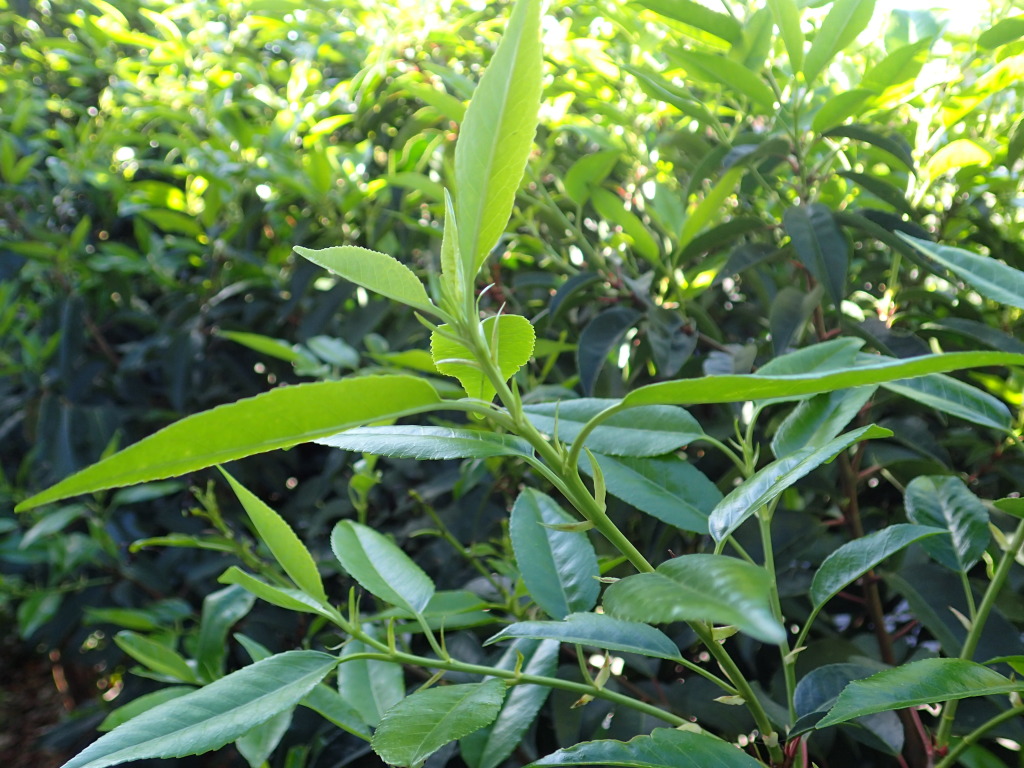Prunus lusitanica
L. Portugal LaurelSpreading, glabrous evergreen shrub or tree 3–8(–20) m high; young twigs and petioles dark red. Leaves elliptic-ovate to oblong-lanceolate, 6–13 cm long, 2.5–7 cm wide, base obtuse to rounded, apex acuminate, margins crenate-dentate, when present, glands restricted to leaf margins; petiole 10–15 mm long. Flowers numerous, in suberect axillary racemes usually 10–28 cm long; pedicels 7–20 mm long. Sepals obtuse; petals suborbicular to obovate, white. Drupe ovoid, 8–12 mm long, glabrous, purplish-black, inedible. Flowers Oct.–Dec.
GipP, CVU, NIS, HSF, HNF. Also naturalised SA, NSW. Native to western Europe. Occasionally naturalised in damp forest e.g. Gembrook, Mount Macedon, Red Hill.
Prunus lusitanica closely resembles P. laurocerasus. Apart from those differences outlined in the key, P. lusitanica may be distinguished from P. laurocerasus in having reddish (rather than green) petioles and young twigs, and darker leaves that lack small circular glands on the undersurface near the base.
 Spinning
Spinning


